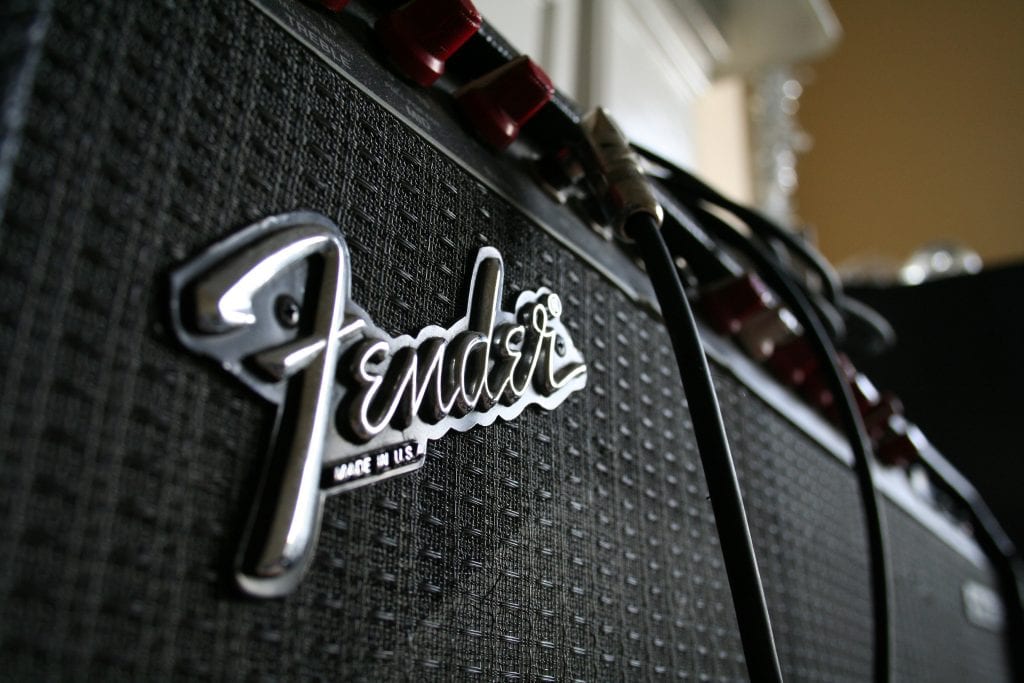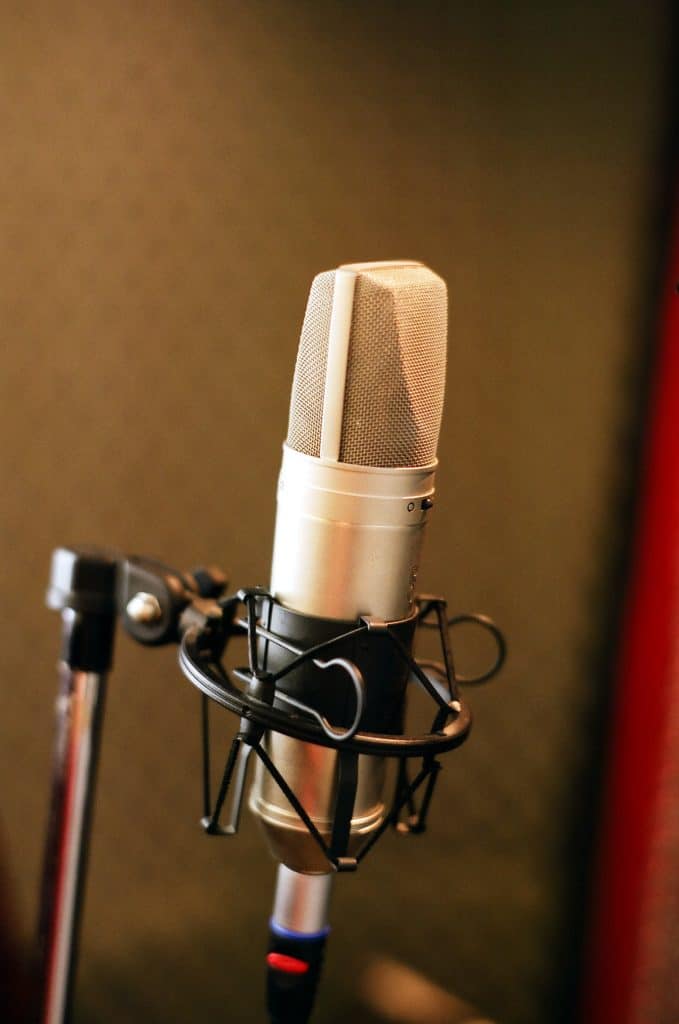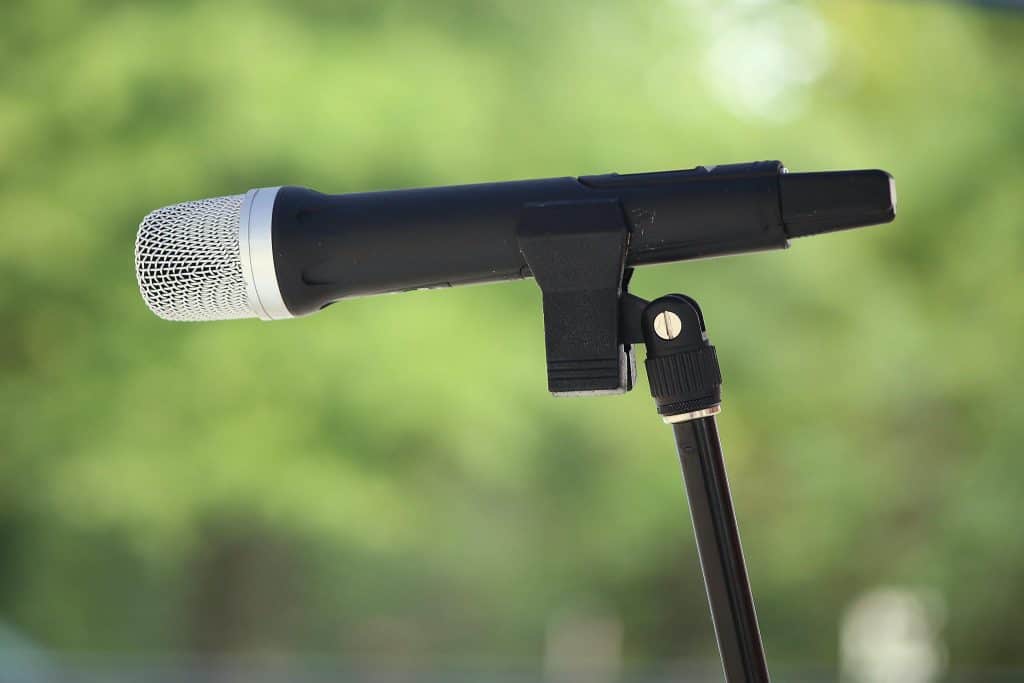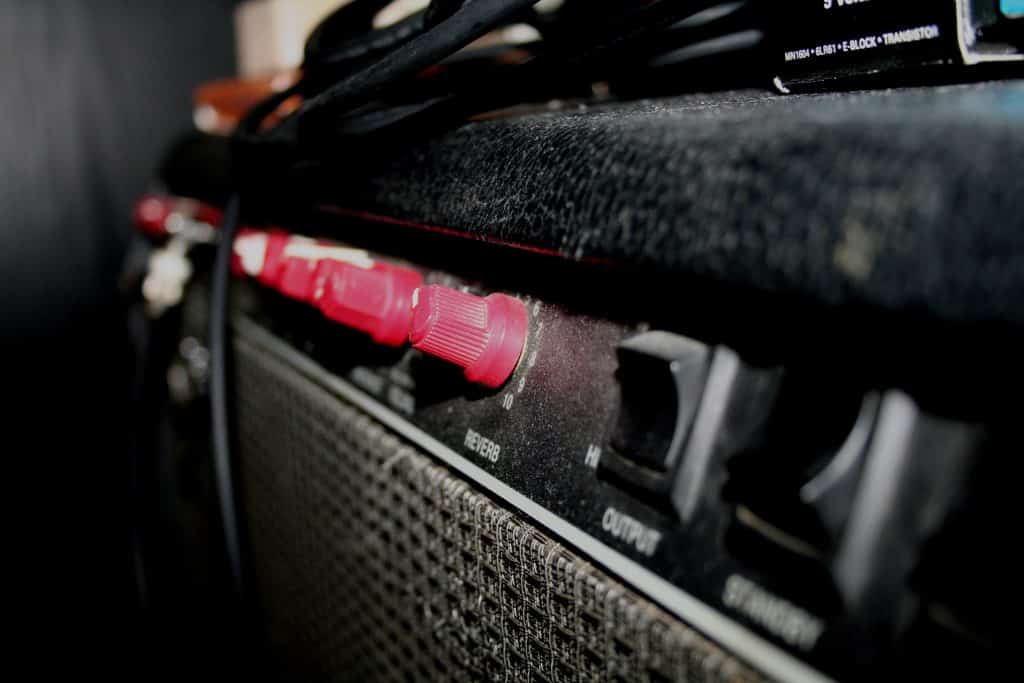What is the best way to record electric guitar?
Unfortunately, there’s no single “best” way to record electric guitar, as it depends on several factors like your desired sound, budget, and available equipment. However, I can guide you through some popular methods and their pros and cons to help you choose the best option for you:

1. Amp Miking:
Pros: Captures the natural dynamics and character of your amp and cabinet, ideal for vintage or organic tones.
Cons: Requires specific equipment (mic, audio interface, cables), can be noisy in apartments, and mic placement is crucial for a good sound.
2. Direct Input (DI):
Pros: Simple setup (just plug your guitar into an audio interface), quiet for late-night practice, and allows for amp modeling and post-production effects.
Cons: Can lack the “air” and natural response of mic’ing an amp, and choosing the right amp simulator is essential.
3. Hybrid Approach:
Pros: Combines the advantages of both methods, capturing the amp’s character with a mic and adding flexibility with a DI signal.
Cons: Requires more equipment and setup complexity, and balancing the two signals can be tricky.
Factors to consider:
Desired Sound: Do you want a classic, organic tone or a modern, heavily processed sound?
Budget: Miking requires additional equipment, while DI might only need a DI box and audio interface.
Equipment: Do you already have a microphone, audio interface, amp, and cabinet?
Recording Environment: Can you play loud with an amp, or do you need a quieter option like DI?
Here are some additional tips:
Experiment with different mics and mic placements: There’s no one-size-fits-all approach, so try different positions and mic types to find what works best for your sound.
Use high-quality cables and equipment: Invest in good cables and audio interface to avoid unwanted noise and ensure optimal sound quality.
Focus on your playing: The best gear won’t make up for bad playing. Practice your technique and dynamics to capture the best possible tone.
Remember, the best way to record electric guitar is the way that works best for you and your sound. Don’t be afraid to experiment and try different methods until you find what you like!
Hardware vs plugins for recording guitar
The age-old debate: hardware vs plugins for recording guitar. Both options have their pros and cons, and the best choice for you depends on your budget, goals, and preferred workflow. Let’s dive into the details:
Hardware:
Pros:
Authentic sound: Real amps and cabinets capture the natural dynamics and character of your playing, often praised for their “warmth” and “feel.”
Tactile control: Knobs, switches, and pedals offer immediate, hands-on control over your sound, which can be inspiring and intuitive for some players.
Stage-ready: If you gig, your recording setup can double as your stage rig, eliminating the need for additional equipment.
Cons:
Costly: High-quality amps and cabinets can be expensive, especially compared to plugins.
Bulky and inconvenient: Transportation and setup can be cumbersome, especially for gigging musicians.
Limited flexibility: Adjusting your sound after recording can be challenging, requiring re-miking or tweaking physical settings.
Plugins:
Pros:
Affordable: Plugins are often significantly cheaper than hardware, with many offering free trials or budget-friendly options.
Versatility: A single plugin can offer a wide range of amp models, effects, and presets, allowing you to explore diverse sonic possibilities.
Flexibility: You can easily adjust your sound after recording, experiment with different combinations, and even swap amps after the fact.
Portable: Plugins are stored on your computer, making them easy to take anywhere and work on the go.
Cons:
Can lack authenticity: While some plugins have come a long way, some argue they lack the organic feel and subtle nuances of real amps.
Learning curve: Adjusting amp settings and effects can be more complex with plugins, requiring some understanding of audio processing.
Limited control: Some players miss the tactile feedback and immediacy of physical knobs and switches.
Choosing the right option:
Budget: If cost is a major concern, plugins offer a more affordable entry point.
Sound preference: If you prioritize authentic, organic tones, hardware might be the better choice. If you value flexibility and experimentation, plugins might be more appealing.
Workflow: Consider how you like to work. Hardware offers a more immediate, hands-on approach, while plugins offer greater post-recording flexibility.
Recording environment: If you have limited space or noise restrictions, plugins might be more practical.
Hybrid approach:
Many musicians combine both hardware and plugins. You can use a DI box to capture a clean signal from your guitar and run it through amp sims for flexibility, while still using a real amp for specific tones or live performances.
Ultimately, the best way to choose is to experiment and see what works best for you. Try out different plugins and hardware options, listen to recordings made with both approaches, and find what inspires you and helps you achieve your sonic goals.
Choosing the right microphone for speaker cabinets – dynamic or condenser

Condenser Microphones
Sensitivity and Frequency Response: Condenser microphones are highly sensitive and can capture a wider range of frequencies and subtle nuances in sound. This makes them ideal for studio recordings, capturing vocals, acoustic instruments, and room ambience.
Clarity and Detail: They offer superior sound quality with a clearer and more detailed audio output. This is crucial for applications requiring high fidelity.
Power Requirements: They require external power, either from a battery or phantom power supplied through a mixer or audio interface. This can be a consideration in terms of setup and portability.
Environment Suitability: Best suited for controlled studio environments as they can pick up background noises due to their sensitivity.
Dynamic Microphones

Durability and Reliability: Dynamic microphones are known for their ruggedness and can withstand rough handling and high sound pressure levels. This makes them suitable for live performances and on-stage use.
Versatility: They are generally more versatile and can be used for a wide range of applications, including vocals, instruments, and even amplifiers.
No Power Requirements: They do not require external power, which makes them easy to use in a variety of settings without the need for additional equipment.
Less Sensitive to Humidity and Temperature: They are more resistant to environmental factors, making them suitable for outdoor and on-the-road use.
Relative Cost
Condenser Microphones: Generally, condenser microphones are more expensive due to their complexity and the quality of sound they produce. Prices can vary widely based on brand, quality, and features.
Dynamic Microphones: These are typically less expensive and offer good value for money, especially for general use and live performance scenarios.
In summary, the choice between condenser and dynamic microphones depends on the specific requirements of the use case, environment, and budget. Condenser mics are preferred for high-quality studio recordings, while dynamic mics are the go-to for live performances and situations requiring rugged, reliable equipment. The cost reflects these differences, with condensers usually being more expensive.
What’s the best microphone position for recording a guitar amp?

Positioning a microphone to record a guitar amp involves several considerations to capture the best possible sound. Here’s a guide to finding the optimal microphone position:
Distance from the Amp:
Close Miking: Placing the microphone close to the amp (about 1-12 inches) captures a more direct and intense sound. This method emphasizes the speaker’s tone and reduces room ambiance. It’s commonly used in studio recordings.
Room Miking: Positioning the microphone further away (several feet) captures more of the room’s acoustics and can create a more natural and spacious sound. This method is beneficial if the room’s acoustics are desirable.
Angle of the Microphone:
Straight On: Pointing the microphone directly at the speaker cone will capture a brighter and more direct sound.
Angled Position: Angling the microphone (off-axis) towards the speaker cone can produce a warmer tone with less high-frequency content.
Position Relative to the Speaker Cone:
Center of the Cone: Positioning the microphone at the center of the speaker cone results in a brighter and more aggressive sound with enhanced high frequencies.
Edge of the Cone: Moving the microphone towards the edge of the speaker cone captures more of the lower frequencies, resulting in a warmer, rounder sound.
Between the Center and Edge: Placing the microphone between the center and the edge of the cone offers a balanced tone, capturing a mix of both high and low frequencies.
Type of Microphone:
Dynamic Microphones: Often preferred for close miking guitar amps due to their durability and ability to handle high sound pressure levels.
Condenser Microphones: Better for room miking to capture more detail and a wider frequency range.
Experimentation:
Every guitar amp and room is different, so it’s crucial to experiment with microphone placement to find the best sound for your specific situation.
Phase Considerations:
If using multiple microphones, ensure they are in phase with each other to avoid phase cancellation, which can weaken or distort the sound.
In summary, the best microphone position for recording a guitar amp depends on the desired sound, the type of microphone used, and the specific characteristics of the amp and room. Experimentation and careful listening are key to finding the optimal position
Essential Equipment for Your Home Recording Studio:

1. Computer:
Budget: Basic laptop (~$500) like Dell Inspiron or Lenovo IdeaPad for simple recording & playback.
Mid-range: Desktop PC (~$1000) like Apple iMac or Asus ROG Strix for smoother performance and more demanding tasks.
High-end: Powerful workstation (~$2000+) like Apple Mac Studio or HP ZBook X3 for intensive processing and large projects.
2. Digital Audio Interface (DAW):
Budget: Focusrite Scarlett Solo 4th Gen (~$140), great for basic setups with clear preamps.
Mid-range: Native Instruments Komplete Audio 6 (~$250), versatile with good preamps and software bundle.
High-end: Universal Audio Apollo Twin X (~$1500), top-notch preamps, excellent audio fidelity, and DSP processing.
3. Digital Audio Workstation (DAW):
Free: Audacity, basic for editing and layering tracks.
Budget: Reaper (~$60), affordable yet powerful with extensive features.
Mid-range: Ableton Live 11 Intro (~$99), popular for electronic music and live performance, also suitable for guitar recording.
High-end: Logic Pro X (Mac only) (~$200), user-friendly with extensive sound library and editing tools.
Industry Standard: Pro Tools (~$700 per year), powerful and versatile, but with a steeper learning curve.
4. Microphone(s):
Dynamic Mic: Shure SM57 (~$100), industry standard for close-miking amps and drums, versatile and durable.
Condenser Mic: Rode NT1-A (~$200), captures a wider frequency range, great for vocals and acoustic instruments.
Budget Bundle: MXL Mics MXT Bundle (~$200), includes both dynamic and condenser mics for basic needs.
5. Headphones:
Closed-Back: Sony MDR-7506 (~$100), popular for monitoring with good isolation and accurate sound.
Mid-range: Audio-Technica ATH-M50x (~$150), comfortable and precise sound reproduction.
High-end: Sennheiser HD 650 (~$300), open-back design for wider soundstage, ideal for critical listening.
6. Studio Monitors (optional):
Budget: KRK Rokit 5 G4 (~$189 per speaker), compact and affordable with decent sound quality.
Mid-range: Yamaha HS8 (~$350 per speaker), accurate and balanced sound for mixing and critical listening.
High-end: Focal Alpha 50 (~$500 per speaker), detailed and transparent sound for professional studio use.
Additional Gear:
Microphone Stand(s)
Pop Filter(s)
XLR Cables
Instrument Cables
Acoustic Treatment (optional)
Tips:
Start with the essentials and gradually expand your setup as needed.
Consider used equipment for budget-friendly options.
Research and compare different brands and models before buying.
Choose equipment that matches your recording goals and preferred workflow.
Don’t forget to learn about recording techniques and music production!
This list is just a starting point, and the best equipment for you will depend on your budget, recording goals, and musical style. Do your research, experiment, and have fun building your home recording studio!
Recording gear for guitar players with professional ambitions
If you’re a guitar player with professional ambitions, investing in quality recording gear is crucial for capturing your musical vision and achieving polished, studio-grade results. Here are some essential components to consider:

1. Audio Interface: This device connects your guitar (either directly or through an amp) to your computer, allowing you to record digitally. Look for an interface with:
High-quality preamps: Choose one with transparent sound and plenty of gain for both clean and high-gain tones. Popular options include Universal Audio Apollo Twin X, Focusrite Scarlett Solo 4th Gen, and RME Babyface Pro FS.
Multiple inputs and outputs: This allows you to connect additional instruments, microphones, and monitors.
Low latency: Latency is the delay between playing your guitar and hearing it back. Aim for an interface with sub-10ms latency for real-time monitoring.
2. Digital Audio Workstation (DAW): This software is your recording and editing hub. Popular options include:
Logic Pro X (Mac only): User-friendly interface, extensive sound library, and powerful editing tools.
Ableton Live: Popular for live performance and electronic music production, but also works well for guitar recording.
Pro Tools: Industry standard for professional studios, but might have a steeper learning curve.
3. Amp Simulators or Real Amps: For amp tones, you have two main options:
Amp Simulators: Software plugins that emulate the sound of real amps and effects pedals. Popular options include Neural DSP plugins, Bias FX, and Helix Native. They offer versatility and portability, but might lack the feel and dynamics of real amps.
Real Amps and Cabinets: If you value the natural response and character of real amps, invest in a high-quality tube amp and matched cabinet. Popular choices include Fender Deluxe Reverb, Marshall JCM800, and Mesa Boogie Boogie Mark V. Be prepared for higher cost and potential noise restrictions.
4. Microphones: If you’re using real amps, consider these mics:
Dynamic Mics: Shure SM57 and Sennheiser e609 are industry standards for close-miking amps, capturing punch and attack.
Condenser Mics: Neumann KM 184 or Rode NT1 can add air and depth, placed further away for room ambience or blended with a dynamic mic.
5. Studio Monitors: Accurate speakers are crucial for monitoring your recordings and making mixing decisions. Choose studio monitors with a flat frequency response and good nearfield performance. Popular options include Focal Alpha 50, Yamaha HS8, and KRK Rokit G4.
6. Headphones: Comfortable, closed-back headphones are essential for late-night recording and critical listening. Look for models with good isolation and accurate sound reproduction.
Additional Tips:
Invest in quality cables: Good cables minimize noise and signal loss.
Treat your recording space: Acoustic treatment absorbs unwanted reflections for cleaner recordings.
Learn about recording techniques: Experiment with mic placement, layering tracks, and effects processing.
Practice your playing: No gear can compensate for poor technique.
Remember, there’s no “one size fits all” approach. Choose gear that matches your budget, desired sound, and recording goals. Experiment, learn, and most importantly, have fun creating great music!
Amp Simulation Softwares
Wide Range of Amplifier Models: Amp sims typically offer a variety of amp models, emulating classic and modern amplifiers. This allows users to achieve a wide range of tones suitable for different music genres.
Cabinet and Microphone Emulations: They often include different cabinet models and microphone types, enabling users to mix and match to create their ideal sound.
Effects and Pedals: Many amp sims come with built-in effects like reverb, delay, chorus, and distortion, replicating pedalboard setups.
Customizable Signal Chain: Users can often customize the signal chain, altering the order of effects and components to shape the sound.
Presets and User Settings: They often come with a variety of presets for quick setups and allow users to save their own settings for future use.
Impulse Response (IR) Loader: Some advanced amp sims allow the loading of impulse responses, offering even more customization for cabinet and room sounds.
Benefits of Amp Simulation Software
Cost-Effective: Amp sims are generally more affordable than purchasing multiple physical amps and effects units.
Space-Saving: They eliminate the need for physical space required for numerous amps and pedalboards, ideal for home studios.
Versatility and Variety: Provides a vast array of tones and settings, enabling users to achieve sounds from different amps and setups without the need for multiple pieces of hardware.
Convenience: Ideal for home recording, allowing guitarists to record at any time without the need for loud amplifiers, which is beneficial in noise-sensitive environments.
Consistency: Ensures consistent sound quality, which is not always achievable with physical amps due to factors like microphone placement and room acoustics.
Portability: Especially useful for musicians on the go, as they can carry their entire rig in a laptop.
Recording Efficiency: Direct recording into a DAW (Digital Audio Workstation) streamlines the recording process, making it easier to edit and mix.
Live Performance: Some musicians use amp sims for live performances, feeding the sound directly to the PA system and eliminating the need for carrying heavy gear.
In conclusion, amp simulation software offers a practical, versatile, and cost-effective solution for guitarists looking to access a wide range of sounds without the need for multiple physical amplifiers and effects units. It’s suitable for both studio recording and live performance contexts.
Question: Do Amp Simulators Really Sound Like Real Amps?
Whether amp simulators sound like real amps is a complex question with no easy answer. It depends on a variety of factors, including:
The quality of the amp simulator: High-end amp simulators from brands like Fractal Audio, Kemper, and Neural DSP can capture the nuances of real amps with startling accuracy. They often use sophisticated modeling techniques that go beyond simple emulation of the electronic circuit to capture the physical interactions between the guitar strings, the speaker cone, and the air itself. However, lower-end amp simulators may sound thin, fizzy, or unrealistic.
The specific amp being modeled: Some amps are easier to model than others. Simple, clean Fender amps are often easier to capture than high-gain boutique amps with complex overdrive characteristics.
The speaker cabinet and microphone: The speaker cabinet and microphone play a crucial role in shaping the final sound of an amp. Amp simulators often allow you to choose from a variety of virtual cabinets and microphones, which can have a significant impact on the tone.
Your personal preferences: Ultimately, whether you prefer the sound of an amp simulator or a real amp is a matter of personal taste. Some guitarists appreciate the convenience and versatility of amp simulators, while others prefer the feel and responsiveness of a real amp.
Here are some of the pros and cons of amp simulators and real amps to help you decide which is right for you:
Amp Simulators:
Pros:
Convenient and portable: You can easily take your amp simulator anywhere with you, and you don’t need to worry about lugging around a heavy amp and cabinet.
Versatile: Many amp simulators offer a wide range of amp models, effects, and presets, making them ideal for players who want a variety of tones.
Quiet: You can practice silently with headphones, which is great for late-night sessions or living in apartments.
Consistent sound: You can get the same great sound every time you play, regardless of the venue or environment.
Cons:
Can lack dynamics and feel: Some amp simulators can feel a bit “sterile” compared to a real amp.
May not be suitable for all genres: Some high-gain amp simulators may not be able to accurately capture the sound of classic vintage amps.
Requires learning curve: Some amp simulators can be complex to use, with a lot of knobs and menus to navigate.
Real Amps:
Pros:
Dynamic and responsive: Real amps have a natural feel and respond to your playing in a way that amp simulators can’t always replicate.
Authentic vintage tones: Some vintage amps have a unique character that is difficult to capture with even the best amp simulators.
Stage presence: A real amp can fill a room with sound and give you a powerful stage presence.
Cons:
Expensive: High-quality amps can be very expensive.
Bulky and inconvenient: Amps can be heavy and cumbersome to transport.
Loud: It can be difficult to practice at low volumes with a real amp.
Inconsistent sound: The sound of a real amp can be affected by the venue, the environment, and even the weather.
Ultimately, the best way to decide whether amp simulators sound like real amps is to try them out for yourself. Many music stores have amp simulators that you can demo, and you can also find used amps online or at pawn shops.
Our favorite interfaces and processor units for recording guitar.
Capturing that perfect guitar tone in a recording depends heavily on your audio interface. Here are my top picks for different budgets and needs:
Best Overall:
Universal Audio Apollo Twin X: Pristine audio quality, powerful DSP processing, stellar guitar amp sims, and a built-in UAD SOLO Core plug-in for vintage analog processing.
Universal Audio Apollo Twin X audio interface
Best Budget:
Focusrite Scarlett Solo 4th Gen: Excellent value for money, clear preamps, and a user-friendly interface. A solid choice for beginners and home studios.
Focusrite Scarlett Solo 4th Gen audio interface
Best Portable:
Solid State Logic SSL 2+: Compact and durable design, great preamps with switchable character options, and bus-powered for recording on the go.
Solid State Logic SSL 2+ audio interface
Best for Amp Modeling:
IK Multimedia AXE I/O: Specifically designed for guitarists, with a JFET input for capturing the nuances of different pickups, built-in IK AmpliTube software for amp and effects modeling, and MIDI I/O for pedals.
IK Multimedia AXE I/O audio interface
Best for High-Gain Tones:
Audient iD4 MKII: Transparent preamps with plenty of gain for heavy riffs and distortion, compact and portable design, and bundled with excellent recording software.
Audient iD4 MKII audio interface
Top Processor Units for Recording Guitar:
Adding effects and processing can take your guitar recordings to the next level. Here are some great options:
Best Overall:
Strymon Mobius: A powerhouse multi-effects pedal with incredible amp sims, reverbs, delays, and modulations. Endless possibilities for sculpting your sound.
Strymon Mobius guitar processor
Best Budget:
Zoom G5n Multi-Effects Processor: Affordable and versatile, with a wide range of amp sims, effects, and expression pedal control. A great option for beginners and gigging musicians.
Zoom G5n MultiEffects Processor
Best for Classic Tones:
Boss GT-1000: Packed with legendary Boss effects like the Blues Driver and DS-1, as well as COSM amp modeling for vintage and modern tones. A classic choice for rock and blues players.
Boss GT1000 guitar processor
Best for Experimentation:
Eventide H9 Harmonizer: A sonic playground with over 90 legendary Eventide effects algorithms, including pitch shifters, delays, reverbs, and granular textures. Perfect for adding unique and atmospheric textures to your recordings.
Eventide H9 Harmonizer guitar processor
Best for Studio Use:
Universal Audio UAD-2 Octo Core: High-end DSP unit with access to a vast library of award-winning UAD plug-ins for vintage analog emulation, including guitar amps, compressors, and effects. A studio essential for professional recordings.
Universal Audio UAD2 Octo Core guitar processor
Remember, the best gear is the one that inspires you and helps you achieve your musical vision. Experiment, listen to recordings you admire, and choose the equipment that speaks to your creative voice!
I hope this list helps you find the perfect audio interface and processor units for your guitar recording needs. Let me know if you have any other questions!
In conclusion, the “Guitarist’s Ultimate Guide: Home Recording Gear Essentials” provides a comprehensive overview of various methods and equipment for recording electric guitar at home. From the pros and cons of amp miking, direct input, and hybrid approaches, to the debate between hardware and plugins, the guide offers valuable insights for both novice and professional guitarists. The choice between condenser and dynamic microphones, along with detailed advice on microphone positioning for amp recording, offers practical solutions for capturing the perfect guitar tone. Furthermore, the guide delves into the essentials of a home recording studio, discussing everything from computers, audio interfaces, DAWs, microphones, headphones, to studio monitors. It emphasizes the importance of choosing the right equipment based on individual needs, budget, and recording goals.
For guitarists with professional ambitions, the guide suggests high-quality gear, including audio interfaces, DAWs, amp simulators, real amps, microphones, studio monitors, and headphones, highlighting the importance of each component in achieving studio-grade recordings. Amp simulation software is presented as a cost-effective, versatile, and convenient alternative to physical amps, beneficial for both studio recording and live performance.
The discussion on whether amp simulators can truly replicate the sound of real amps brings out the nuances of both options, ultimately leaving the choice to personal preference and specific requirements. The guide concludes with recommendations for top interfaces and processor units for recording guitar, catering to different needs and budgets, thus providing guitarists with a comprehensive resource to make informed decisions and enhance their home recording setups. This guide is a testament to the evolving landscape of guitar recording, blending traditional methods with modern technology to help guitarists achieve their creative and professional goals

